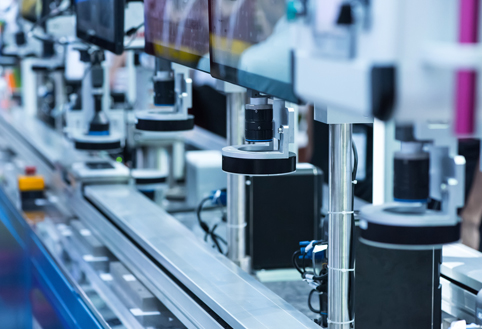
Using Microsoft cognitive search along with other tools to track visitor’s behavior and improve exhibits of a museum
The public funds going in the accounts of a renowned museum saw a significant decline and it was then that they joined hands with Glorious Insights. Check out what kind of Challenges were they facing and how we helped them achieve their goals. The case study discusses in length about how the use of Microsoft Cognitive Search along with a few other tools helped them in keeping a track of visitors’ behavior and eventually improving the exhibits of their museum.
Customer background
A renowned museum and art gallery has been a vital spot for lovers of arts and history for many years. It covers a wide range of exhibits. It provides every visitor with a unique opportunity to explore the old and new, all within the same premises. You can find extraordinary pieces and art of historic importance that dates back to more than 750 years in ancient times.
Recently the museum joined hands with Glorious Insights to make their exhibits more compelling to the visitors. Another aim was to understand the visitor's behavior and how they use the museum to draw more visitors and increase the museum's income.
Challenges
In recent times, the museum expected its public funding to go low significantly. For that reason, they needed a solution that can draw higher public attendance. The two basic challenges faced in this regard were:
- Making exhibits smarter and compelling
Most museums provide their visitors with printed information about the exhibits. This information is precise, fact-based, and generic to suit all patrons. The museum in collaboration with Glorious Insights decided to provide information more smartly. That is more compelling and grabs the attention of everyone entering the museum.
- Understanding patron behavior
Information about the patrons like their age, gender, and which exhibits they admired the most is collected. This information helps in organizing the exhibits more efficiently and reporting to the funding bodies. The task was to optimize this information and provide a better insight into the visitor’s interest.
Solution
Glorious Insights provided the museum with an exceptional way to understand the patrons' interests and deliver accordingly. The task was complex and involved the implementation of several technologies.
The key objective was to identify the attributes like age, gender, and interest of the visitors. One technology that allows us to achieve this objective is cognitive search. We exploited the ability of this new generation technology to access pictures and videos to capture visitors’ interest in real-time.
- Functional aspect
The primary objective is achieved by deploying an IoT device, webcam, and a speaker at all the exhibits. The function of the solution system can be explained in the following steps.
- Detecting the presence of visitors in front of the exhibit.
- Greeting them and taking a picture
- Identifying roughly the age, gender, and emotional state of each visitor.
- Playing a brief description of the exhibit based on the information captured in the previous step. For example: if the visitors are young, say, students, the description will be played in an enthusiastic accent and youth-oriented script. For older patrons, a more formal description will be played.
- Finally, detecting the departure of the visitors and stop description play.
- Technical aspect
It is clear that the core functionality is to take the picture and identify the right kind of description that can interest the visitors. This helps to grab their attention and make the exhibits more compelling. Cognitive search, the new generation search from Microsoft has been a savior in achieving this goal.
Cognitive search API allowed us to detect the faces, create a face list, and find similarities in the attributes to evaluate the kind of information to be provided. This data is sent to the datastores. Power BI is then used to analyze this data to derive actionable information. Everything is done, quickly, in real-time, to deliver a smart and compulsive experience for the patrons.
Results
With the above solution in place, the museum is now able to achieve all the goals it has set to improve public attendance.
- The exhibits are now arranged according to the patron’s preference rather than relying on the experience of the curator.
- The attractive presentation could develop an interest in the people and pull in more visitors every day.
- With a better understanding of the visitors and higher attendance helps in convincing the funding bodies to maintain their association with the museum and keep up their support. It also helped in drawing new organizations and individuals to invest.




